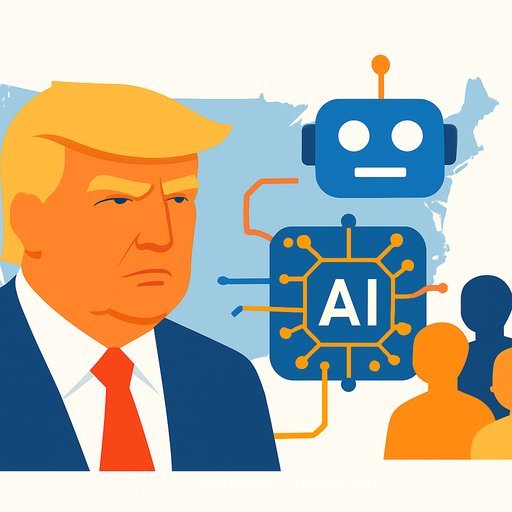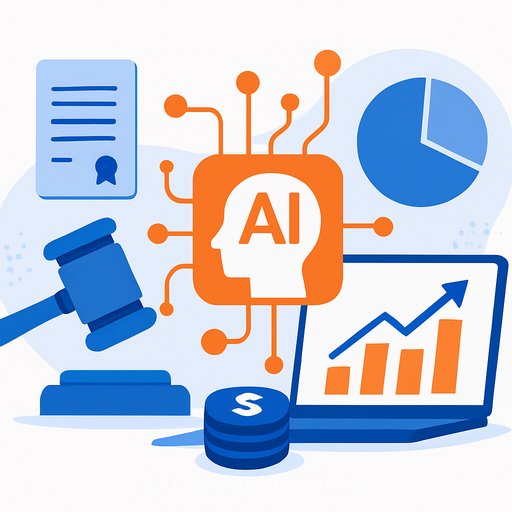Big Law: From buzzword to backbone - how AI is driving growth in APAC's legal sector
AI is no longer a side project. Across APAC, it has become part of daily legal work, shifting the conversation from "should we use it?" to "where does it fit in our stack?"
Following a regional AI webcast, Jennifer Cathcart, head of APAC at NetDocuments, and Hayley Leung, senior solutions consultant for APAC, shared a pragmatic view: success isn't about chasing tools. It's about integration, workflow fit, and measurable value.
Treat AI as part of your stack, not a standalone strategy
Cathcart put it plainly: AI is just technology. The question is how you embed it into daily practice without disrupting what already works.
Framing AI as a separate initiative creates complexity and slows adoption. Fold it into existing systems, processes, and habits so lawyers feel continuity, not chaos.
Adopt what aligns with firm value
"The growth is happening very quickly, and each firm is going to be different with how they adopt that level of growth," Cathcart said. The filter is simple: pick use cases that solve your highest-friction problems and match your risk profile.
Ignore the noise. Start where value is obvious to lawyers and clients-then build from there.
Start simple, embed, and build on a solid foundation
"If firms try to completely uproot their tech stack in one go, it can become painful and complex, with huge adoption hurdles," Cathcart noted. The smarter approach: establish a stable base layer that supports future integrations.
Think add, not replace. Slot AI into your DMS, email, and knowledge systems so it meets lawyers inside the tools they already trust.
Integrate, don't collect point solutions
Leung warned against stacking many single-use AI tools. "Ensuring that the platforms work together, that they're connected, and they're embedded" beats buying a tool for every task.
One integrated workflow beats five disconnected apps every time.
Evaluate AI by the value it creates
The right formula balances what technology accelerates and where legal expertise shines. As Cathcart said, target use cases that remove heavy lifting and repetitive work so experts can focus on high-value legal judgment.
A practical playbook for APAC firms
- Map your workflows and pain points: intake, research, drafting, review, evidence management, billing, and client comms.
- Pick low-risk, high-confidence pilots: document search, summarisation, clause comparison, templates, time capture, and KM surfacing.
- Embed inside core systems: integrate with your DMS, email, and KM tools; avoid hopping across apps.
- Set policy guardrails early: confidentiality rules, review protocols, human-in-the-loop, and audit trails. For governance references, see Singapore's Model AI Governance Framework here.
- Train for adoption, not features: short workflows, internal champions, and clear "dos and don'ts." If you need structured upskilling, explore role-based AI courses here.
- Measure what matters: turnaround time, accuracy, recovery/realisation rates, and client feedback.
- Iterate and scale: expand only after pilots show consistent results and minimal rework.
- Run vendor diligence: data residency, SOC2/ISO certifications, encryption, logs, and clear policies on training data usage.
What good looks like in year one
- Research and first-draft times shrink without sacrificing quality.
- More consistent precedent use and clause hygiene across teams.
- Better KM retrieval inside the DMS, not scattered across tools.
- Fewer copy-paste errors and tighter version control.
- Clear audit history to satisfy internal and client expectations.
Common mistakes to avoid
- Buying one tool per function-then fighting integration debt.
- Ripping and replacing your stack instead of layering in capabilities.
- Skipping data hygiene and permissions before rolling out AI.
- Launching pilots without success metrics or a de-risked review process.
The mindset shift
AI isn't a silver bullet. It's a systems upgrade for legal work-quietly removing friction so lawyers can spend more time on strategy, advocacy, and client trust.
Start where impact is obvious, embed into what already works, and let results guide expansion. That's how AI becomes the backbone, not a distraction.
Your membership also unlocks:






